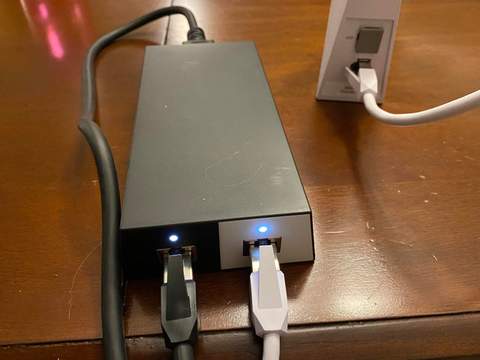
Serial entrepreneur Elon Musk has his mind set on enveloping the planet with thousands of low-orbiting satellites that can beam high-speed internet to any location, no matter how remote it may be. It’s an extremely ambitious plan rife with many challenges but early results are already very promising, according to beta testers of the broadband internet service known as Starlink.
There are at least 900 Starlink satellites currently in orbit, deployed over 14 launches of SpaceX’s reusable Falcon 9 rocket. The company wants to launch dozens of such satellites every two weeks until the fleet numbers 12,000 or up to 42,000. When completed in mid-2027, the network ought to support half a million users simultaneously with a 100 megabit-per-second internet speed.
Until that lofty goal is reached, Starlink is available to a few lucky beta testers who are part of the “Better Than Nothing Beta” test program. Some have shared their satellite internet performance on reddit and twitter, with pretty good results, according to reports by Tesmanian.
“As you can see from the title, we are trying to lower your initial expectations,” SpaceX wrote in a statement sent to its beta testers, “Expect to see data speeds vary from 50Mb/s to 150Mb/s [megabits per second] and latency from 20ms to 40ms [milliseconds] over the next several months as we enhance the Starlink system. There will also be brief periods of no connectivity at all.”
“As we launch more satellites, install more ground stations and improve our networking software, data speed, latency and uptime will improve dramatically,” the email continued. “For latency, we expect to achieve 16ms to 19ms by summer 2021.”
Seems like the email was on point. Writing on Twitter, Kenneth Auchenberg, one of Starlink beta testers, shared his experience with Starlink, claiming he was able to stream videos at “1440p and 4K with zero buffering on YouTube”. A screenshot of a speed test attached to the same posts shows that Auchenberg’s connection experienced a latency speed of 38 milliseconds (ms), a download speed of 134 megabits per second (Mbps), and an upload of 14.8 Mbps. Elon Musk himself later replied that “latency will improve significantly soon.”
Starlink internet users don’t connect to the satellite network directly. Instead, the signal is first sent to ground stations, which then distribute the connection to end-users through a 19-inch phased-array dish called “Dishy McFlatface”. Besides the antenna, the Starlink Kit also includes a Wi-Fi router and a mounting tripod for the dish.


Having the ability to setup a wireless internet connection virtually anywhere in the world is extremely appealing. But not everyone is welcoming the thousands of upcoming satellites. Astronomers, for instance, are worried that glare from this megaconstellation of sallites will ruin sensitive telescope observations. Other space companies and satellites operators are worried that the crowding of low-orbit with internet satellites will make it increasingly difficult to find a clear path through which to launch their own rockets.

The Starlink Kit will initially cost $500, with a later target of $200 per terminal, while the monthly broadband service fee is priced at $99. If you want to learn more about Starlink and receive notifications about when the service will be available in your area, visit their website.


